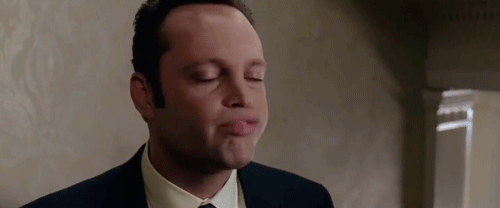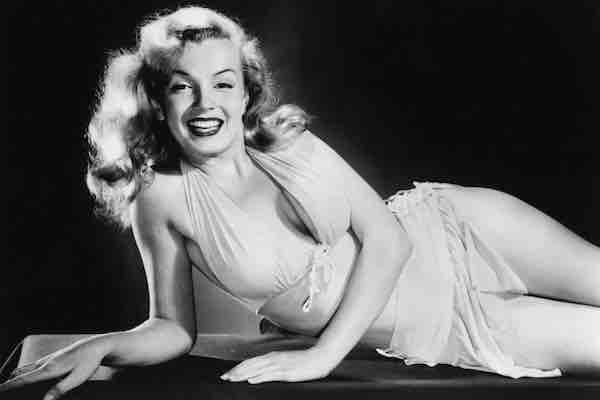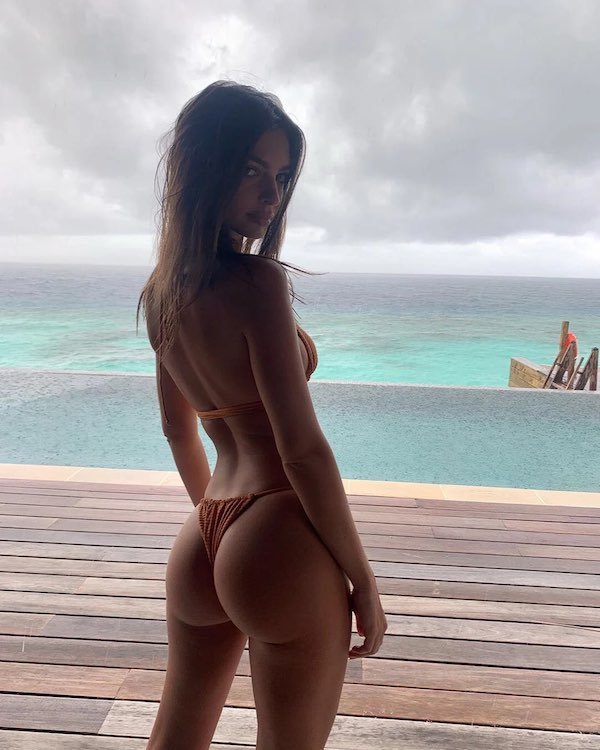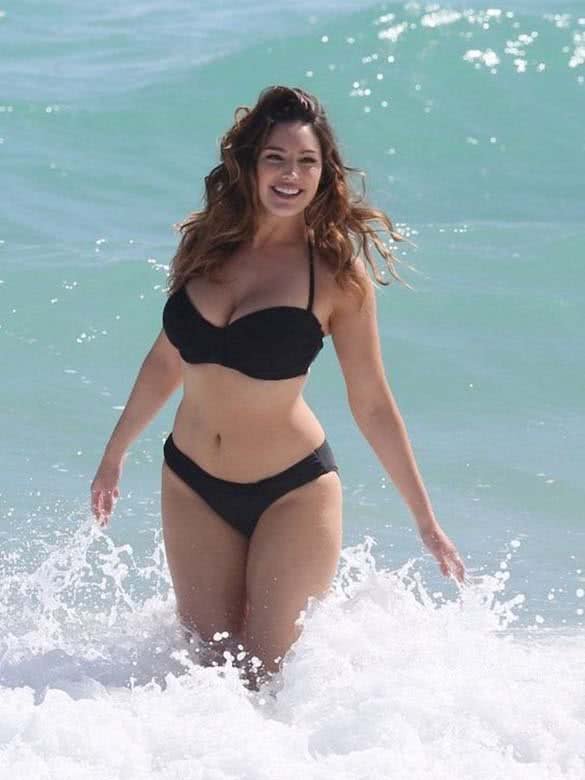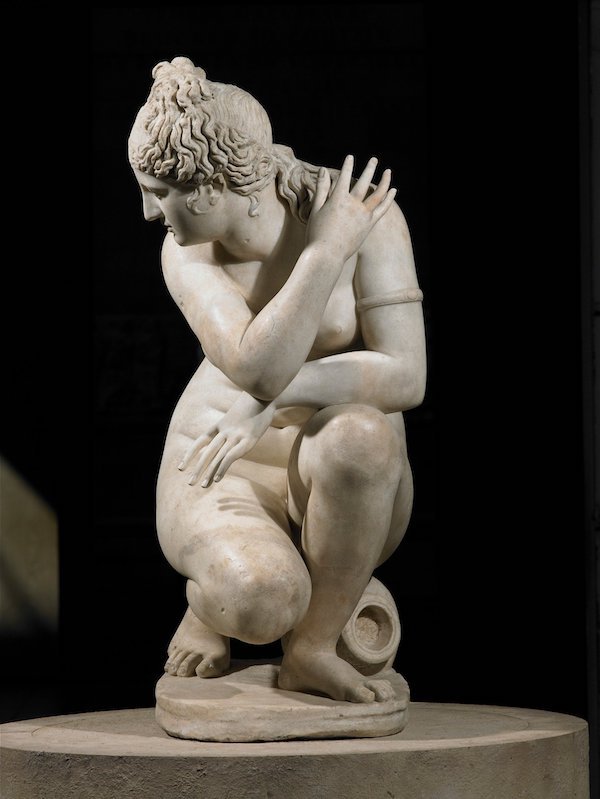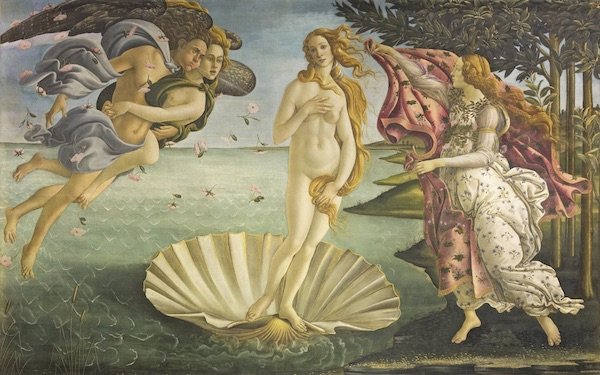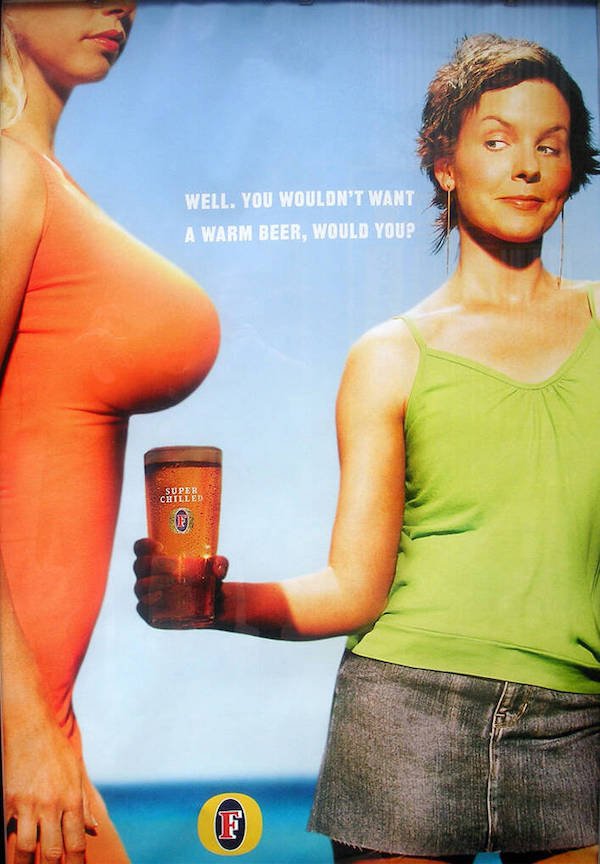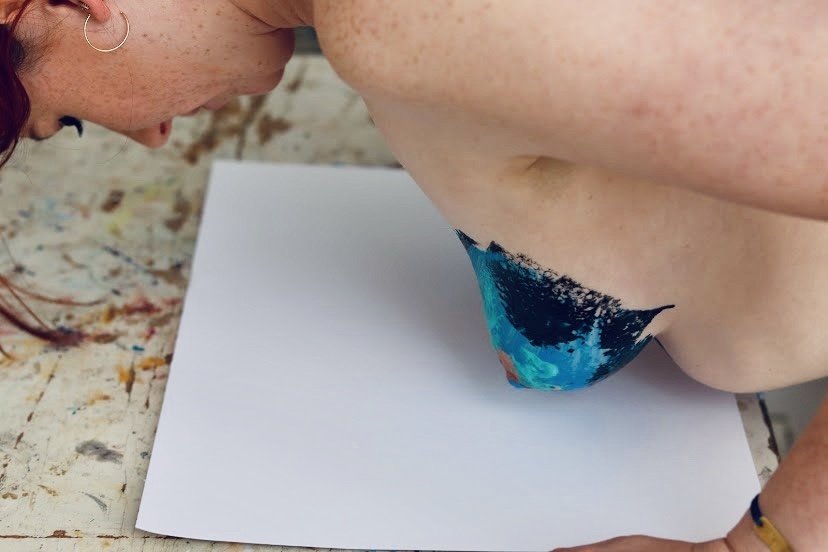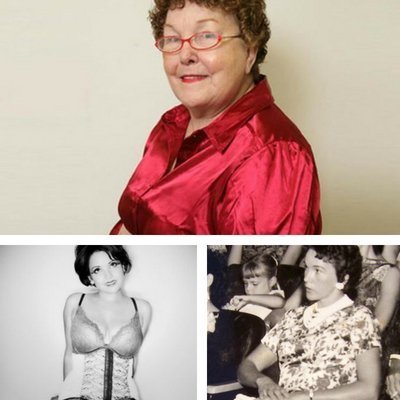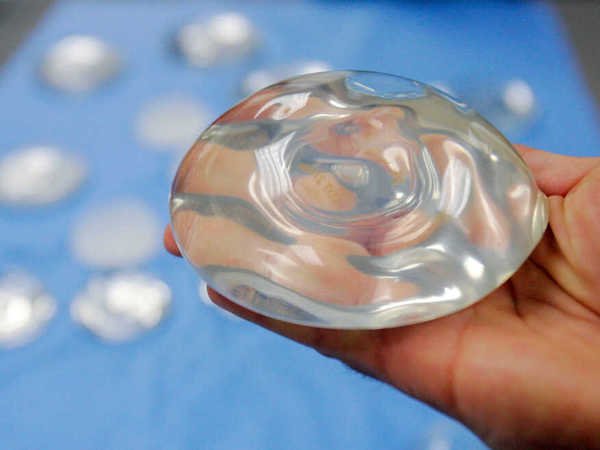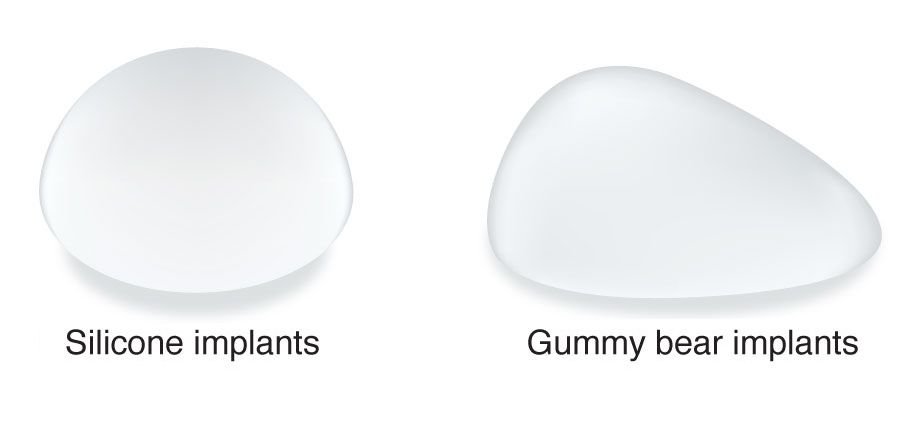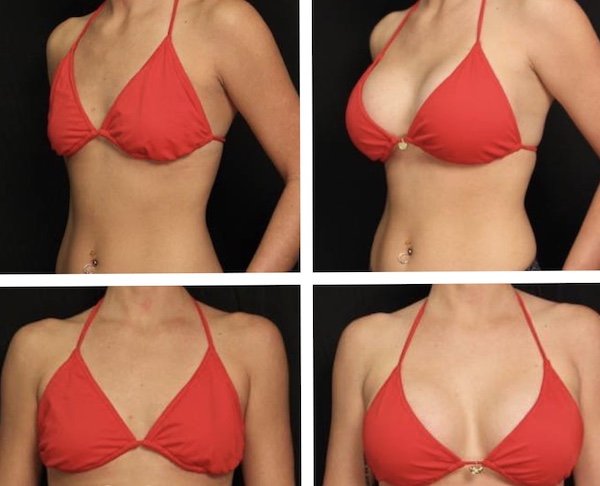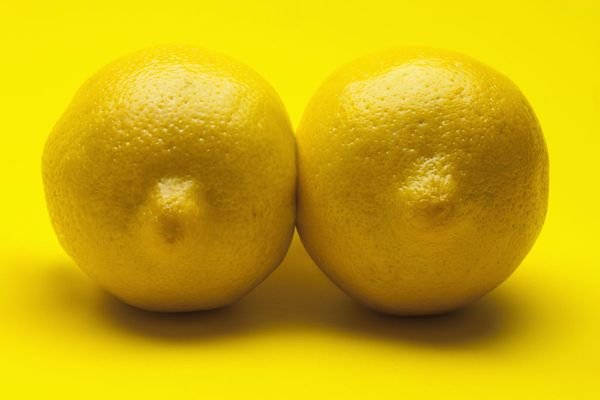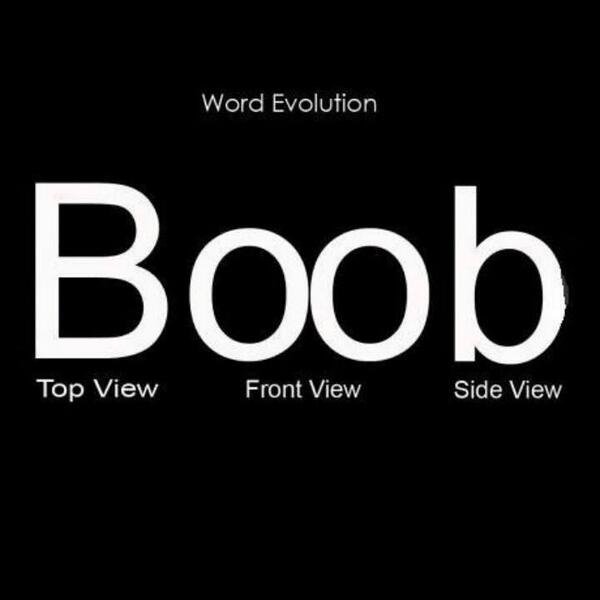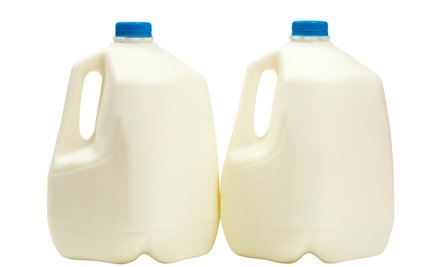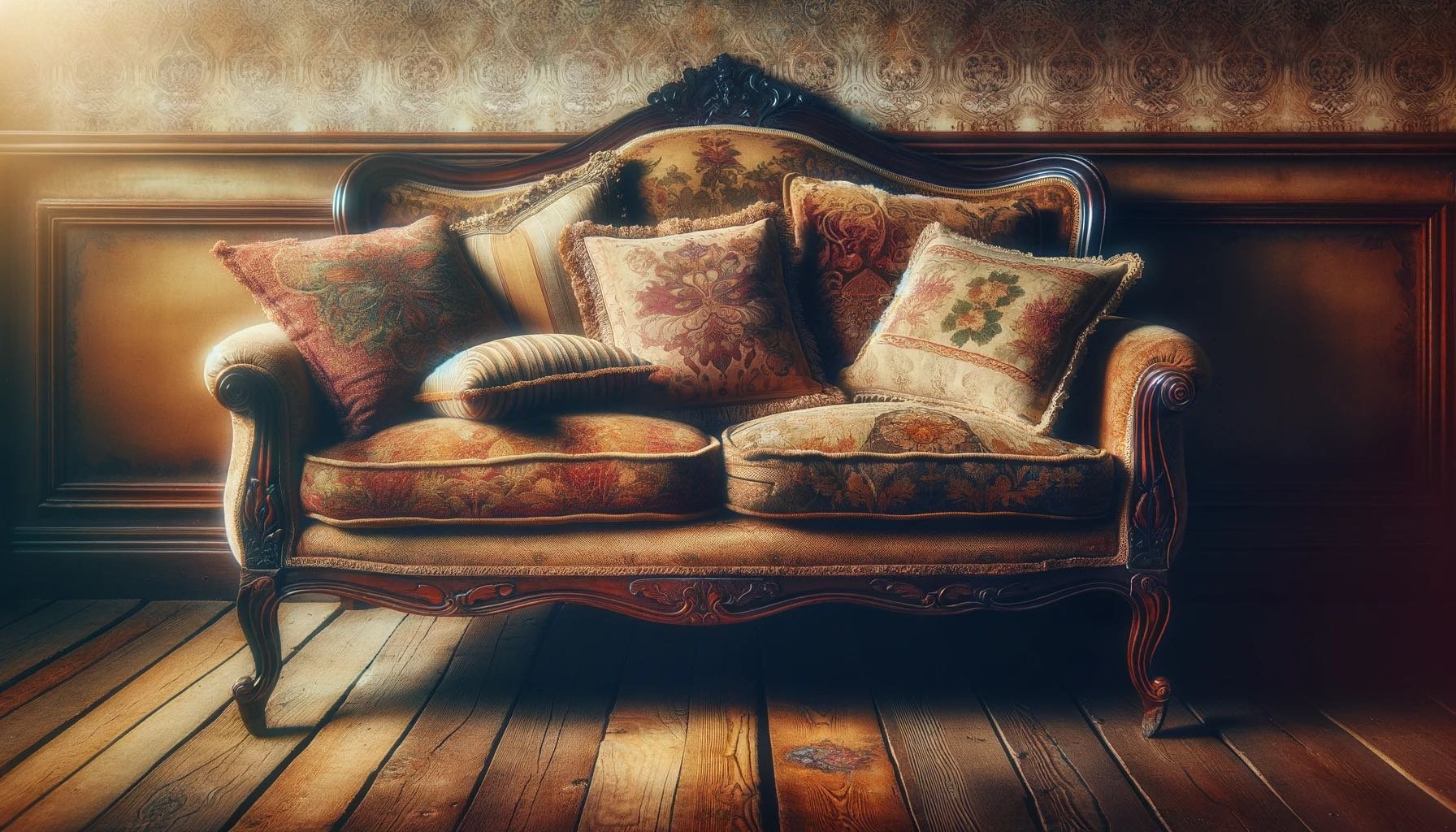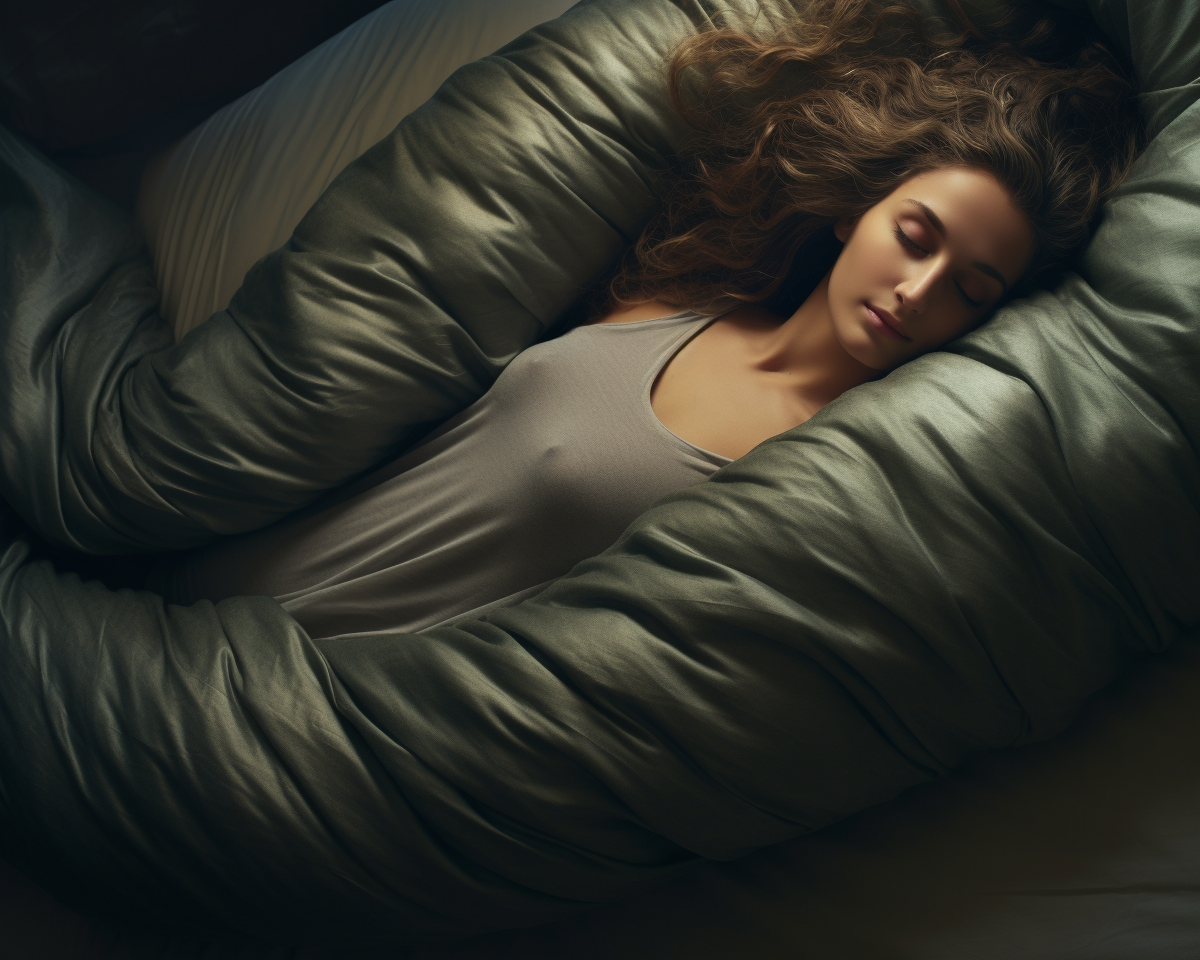Join us as we explore all things boobs. From inception to celebration we're boob lovers and we know you are too. And that's totally ok.
Full Speed Ahead: The Origins of 'Motorboating'
Some may know what it means, others may blush once it's explained, and some may scratch their heads in complete bafflement. What in the world do motorboats have to do with anything, especially when it comes to breasts? Well, dear reader, grab your life jackets because we're about to dive into the rollicking waves of this word's history.
There's a term out there that's sure to either draw laughs or turn heads when dropped into conversation, and it's "motorboating." Some may know what it means, others may blush once it's explained, and some may scratch their heads in complete bafflement. What in the world do motorboats have to do with anything, especially when it comes to breasts? Well, dear reader, grab your life jackets because we're about to dive into the rollicking waves of this word's history.
The Maritime Connection
First and foremost, let's get one thing straight - yes, there is an actual connection between motorboating and the watercraft. As you may know, motorboats create a particular sound and motion when they're speeding through water. The term "motorboating," in its colloquial usage, is derived from the mimicking of this motion and sound in a rather intimate context - usually involving a pair of breasts and a willing participant's face.
Etymology Escapades
Tracing the exact origin of 'motorboating' in the context of breasts can be a bit like trying to find a specific wave in the ocean. The term has been used in various circles, often informally and away from the prying eyes of mainstream media or academia, which makes its history a bit murky. What we do know, however, is that the term was being used well before "Wedding Crashers" introduced it to a wider audience. Urban Dictionary, our modern beacon of slang enlightenment, has an entry for 'motorboat' dating back to 2003. While it's challenging to pinpoint the exact year the term first cropped up, it's clear it's been part of our vernacular for at least a few decades, quietly bubbling under the surface before making a splash in popular culture.
The Pop Culture Effect
The term came into mainstream use, and dare we say, 'popularity,' primarily through its appearance in pop culture. It was featured prominently in a scene from the 2005 comedy film "Wedding Crashers," where Vince Vaughn's character enthusiastically explains to Owen Wilson's character the pleasures of motorboating. The term was met with a mix of laughter and cringes, ultimately adding to its humor quotient.
Social Media and Beyond
Thanks to the power of the internet, the term soon picked up steam and became a viral sensation. Social media platforms, memes, and even some daring talk-show hosts began using it, further cementing its place in the modern lexicon. Today, it’s recognized by many as an amusing, if not slightly cheeky, part of our vocabulary.
Conclusion
So, there you have it - the history of the term motorboating in all its hilarious, smile-worthy glory. It's become a part of the cultural fabric, a testament to the influence of pop culture, humor, and yes, our favorite: the fascination with breasts. Happy boating, folks!
Ready to bury your face in some big ones?
Rear vs Rack: How Preferences Have Changed Through Time and Across Cultures
There's no denying that preferences vary across cultures and time, especially when it comes to body aesthetics. This article focuses on the shift in preference between breasts and buttocks throughout the ages and across cultures, based on historical art, literature, and sociological studies. Buckle up and let's take this intriguing ride through time and across continents.
Introduction
Before we dive into the bosom of our discussion or bottom out on our key points, let’s be clear - we're all about appreciating diversity and the beauty of the human form. However, there's no denying that preferences vary across cultures and time, especially when it comes to body aesthetics. This article focuses on the shift in preference between breasts and buttocks throughout the ages and across cultures, based on historical art, literature, and sociological studies. Buckle up and let's take this intriguing ride through time and across continents.
Historical Perspective
Travel back to the ancient cultures of Mesopotamia, Egypt, Greece, and Rome. Statues and frescoes alike show both breasts and buttocks were equally celebrated, but in different contexts - fertility, beauty, power. Moving forward to the Middle Ages and the Renaissance, we see the figure of women in art becoming fuller, with a notable shift towards the bust.
Now, stroll into the Victorian era, an interesting period where modesty was key and bodies were hidden under layers of clothing. Here, a woman's 'assets' were more inferred than openly displayed, but certain trends did exist.
Fast forward to the 20th century - a roller coaster ride of body preferences! The Roaring Twenties flappers went for a flatter chest, while the post-World War II era saw a return to fuller figures (think Marilyn Monroe).
Cultural Perspective
On a global scale, things get even more fascinating. Western societies traditionally favored the bosom, yet recent trends show an increasing admiration for the derrière, a shift made popular by celebrities and fitness influencers.
On the other hand, Eastern cultures, like India, China, and Japan, traditionally haven't shown a marked preference for either breasts or buttocks, placing more emphasis on other aspects of female beauty such as complexion or facial features.
African societies often traditionally placed a higher value on the buttocks, with cultures such as the Himba and Ndebele seeing them as symbols of fertility and desirability. Latin American cultures, meanwhile, have a well-known appreciation for both attributes, with beauty standards heavily influenced by curves.
Psychological and Biological Factors
Biologically speaking, breasts and buttocks signal fertility and health, key factors in the evolutionary game of attraction. But psychological factors, societal influences, and media representation also play their part in shaping our preferences.
Biological Factors - Speakman's Perspective
Professor John R. Speakman, in his 2018 research titled "The Evolution of Body Fatness: Trading Off Disease and Predation Risk," proposed an intriguing theory. His work suggests that our body fatness, including both breasts and buttocks, evolved as a balance between the risks of predation and disease. Interestingly, the fat stored in these areas is thought to serve as a caloric reserve during periods of food shortage, and could indicate health and fertility.
Attraction to Fat Deposits - An Evolutionary Standpoint
From an evolutionary standpoint, Speakman's theory can provide insights into why different cultures might prefer one body feature over another. Where food scarcity was a concern, cultures might have favored more noticeable fat deposits, such as larger breasts or buttocks, as an indicator of health and fertility. Conversely, in societies where food was plentiful or disease was the primary risk, slender figures might have been preferred. This evolutionary perspective lends a fascinating layer to our understanding of cultural body preferences.
Conclusion
From ancient societies to modern cultures, it's clear that the 'breasts vs buttocks' debate varies greatly across time and cultures. The shifting trends are a testament to the evolving perceptions of beauty, influenced by society, media, and individual tastes.
Future Perspectives
Predicting future trends is always tricky and my guess is that it’s likely that norms of beauty will keep evolving. One thing’s for sure, whether it’s the breast or the buttock in the spotlight, we admire both and the celebration of the human form in all its diverse beauty isn’t going anywhere soon.
Here's to celebrating all body types. Whether you're more of a 'boobs' or a 'butts' appreciator, let's remember - beauty is indeed in the eye of the beholder.
Breasts in Art: A Historical Perspective
Do you remember the first time you encountered the 'Venus of Willendorf'? If your memory needs a little jog, let me paint you a picture (pun intended). The Venus of Willendorf is a tiny limestone figurine carved some 25,000 years ago, featuring a woman with ample curves and pronounced breasts. Historians believe these exaggerated features symbolize fertility and the nurturing aspects of womanhood. Fast forward to the present day, and the fascination with breasts in art persists, albeit taking on different forms and meanings.
Where it all began
Do you remember the first time you encountered the 'Venus of Willendorf'? If your memory needs a little jog, let me paint you a picture (pun intended). The Venus of Willendorf is a tiny limestone figurine carved some 25,000 years ago, featuring a woman with ample curves and pronounced breasts. Historians believe these exaggerated features symbolize fertility and the nurturing aspects of womanhood. Fast forward to the present day, and the fascination with breasts in art persists, albeit taking on different forms and meanings.
Egyptian Era
Breasts have often been a focal point in art, playing pivotal roles in symbolizing various themes, from fertility and beauty to power and femininity. During the ancient Egyptian era, goddesses were often depicted bare-chested, symbolizing fertility and motherhood. Isis, the goddess of motherhood and magic, was frequently portrayed nursing her son Horus, signifying the nurturing aspect of femininity.
Greeks and Romans
The Greeks, known for their love of symmetry and ideal beauty, showcased breasts in a more aesthetic manner. Statues of Aphrodite, the goddess of love, beauty, and fertility, often displayed her in the nude, with her breasts signifying allure and eroticism. The Roman era followed suit, with Venus, the Roman equivalent of Aphrodite, often depicted similarly.
Indian Culture and the Kamasutra
The beauty of the human form, including breasts, also found expression in the Indian subcontinent. Intricately carved sculptures in ancient temples showcased women in various stages of undress, the fullness of their breasts symbolizing fertility and sensuality. These artistic representations reflect the liberal attitude towards sexuality in ancient Indian society, as also evidenced in the Kamasutra, an ancient Indian text on erotic love and sexuality.
Mesoamerican Cultures
The art of Mesoamerican cultures also provides intriguing insights into their perception of breasts. The Mayans, for instance, portrayed women with exposed breasts in their pottery and sculptures, symbolizing the role of women as life-givers. Their goddess Ixchel, associated with motherhood and fertility, was often depicted with heavy, drooping breasts, symbolizing her role as a nourisher.
Asian Culture/History
Asian cultures, too, have their unique artistic expressions of breasts. In traditional Japanese art, for instance, the focus was less on the size of the breasts and more on the nape of the neck, which was considered an epitome of femininity and sensuality. However, the modern era has seen a shift, with manga and anime often exaggerating the size of female characters' breasts, reflecting changing perceptions and influences.
Middle Ages and The Renaissance
In the Middle Ages, the portrayal of breasts took a back seat, aligning with the period's modesty and religious piety. However, the Renaissance saw a revival of the nude female form in art. Artists like Botticelli and Titian returned to the Greco-Roman tradition of presenting the female form as a symbol of beauty and sensuality.
20th and 21st Centuries
Fast forward to the 20th and 21st centuries, the depiction of breasts in art became more diverse, often challenging societal norms and questioning existing beauty standards. Artists like Judy Chicago and Hannah Wilke used the motif of breasts in their feminist art to challenge the objectification of the female body and promote body positivity.
The Influence of Pop Culture on Breast Depiction
In the age of social media and pop culture, breasts have taken on a whole new level of prominence. From music videos to fashion trends, the depiction of breasts has moved beyond classical art and permeated every corner of modern visual culture. This shift has sparked conversations about over-sexualization, body positivity, and the fine line between artistic expression and objectification. It has also opened up new avenues for dialogue about breast health and cancer awareness.
Breasts in Advertising
The use of breasts in advertising is another compelling aspect of this narrative. Companies have long utilized the allure of breasts to market products, ranging from lingerie to even completely unrelated items like cars or beer. This strategy, while successful in grabbing attention, has often been criticized for perpetuating unrealistic beauty standards and for its potential to reduce women to mere sexual objects. However, with an increasing demand for authenticity and representation in advertising, we're starting to see a shift towards more diverse and realistic portrayals of breasts.
Breasts and Feminism
The feminist movement has also had a significant impact on how breasts are viewed and portrayed in society. Feminists have fought for the right to go topless, normalize breastfeeding in public, and challenge the sexualization of female bodies. Art has often been a tool in these endeavors, with artists creating pieces that emphasize the power, beauty, and natural function of breasts, rather than focusing solely on their sexual appeal. This wave of empowerment has brought about a new era of breast representation that champions choice, respect, and equality.
The Future of Breasts in Art
As we cast our gaze to the future, we can anticipate an even greater evolution in the depiction of breasts in art. Advances in technology, such as virtual and augmented reality, offer new ways to express and interpret this classic symbol. Artists may leverage these tools to challenge existing notions of beauty, femininity, and sensuality, creating immersive experiences that generate empathy and understanding. As we become more comfortable discussing topics that were once taboo, we may see more diverse representations of breasts in art. This could include realistic depictions of mastectomy scars, breastfeeding, and the natural aging process of breasts. The future of breasts in art will likely mirror the ongoing societal shift towards body positivity and acceptance, ensuring this timeless symbol remains relevant and provocative for generations to come.
We ❤️ Boobs in Art
Breasts, in their various shapes, sizes, and states, continue to inspire, provoke, and fascinate. From the cave paintings of prehistoric times to the boundary-pushing works of contemporary artists, the depiction of breasts in art has been a reflection of societal attitudes towards femininity, sexuality, and beauty. Their presence in art underscores their symbolic importance across cultures and through the ages.
Who Invented Breast Augmentation?
Lights, camera, scalpel! Welcome to a voyage through time where vanity takes a new form, and surgeons become artists. Breast augmentation, known to many as the 'boob job', is a surgical procedure that has changed the game of physical beauty. But who do we credit for this groundbreaking invention? Let's take a peek behind the surgical curtain.
Lights, camera, scalpel! Welcome to a voyage through time where vanity takes a new form, and surgeons become artists. Breast augmentation, known to many as the 'boob job', is a surgical procedure that has changed the game of physical beauty. But who do we credit for this groundbreaking invention? Let's take a peek behind the surgical curtain.
The birth of breast augmentation traces back to the late 19th century, but the practice really got into its stride in the 20th century. The first recorded attempt at breast augmentation surgery was by a Viennese doctor named Vincenz Czerny in 1895. Czerny transferred a benign lipoma (a fatty lump) from a patient's hip to her breast to correct asymmetry after he had removed a tumor. Inventive? Yes. Ideal? Not so much.
Between the pioneering work of Vincenz Czerny in 1895 and the silicone revolution by Cronin and Gerow in 1962, there were several attempts to enhance the female bust. However, most were far from ideal. Surgeons experimented with a range of materials for breast augmentation, including paraffin, glass balls, ivory, and even ox cartilage. The 1950s saw the introduction of injections directly into the breast, with substances like silicone and polyvinyl. Unfortunately, these methods often led to disastrous results, such as hardening, lumps, and infections. This trial and error period highlighted the need for safer, more effective methods, eventually paving the way for the silicone implants of the 1960s.
Fast forward to the 1960s, when American plastic surgeons Thomas Cronin and Frank Gerow developed the first silicone breast implant with the Dow Corning Corporation. The first woman to have silicone implants was Timmie Jean Lindsey in 1962. The aim wasn't initially for larger breasts, but rather to correct a few chest wall deformities and lift her natural breast contour. However, she ended up opting for larger breasts on the surgeons' suggestion, and thus began the era of the modern 'boob job'.
The silicone implants, despite their initial success, soon faced significant controversy. The major concern revolved around the issue of implant rupture and silicone leakage. In the 1980s and 90s, lawsuits started piling up against implant manufacturers, claiming that the silicone leaks were causing autoimmune diseases and other health problems. This led to a fourteen-year FDA ban on silicone implants for cosmetic use, starting in 1992. The ban lifted in 2006 when studies found no link between the implants and diseases. However, this period of intense scrutiny prompted the development of safer alternatives like saline and 'gummy bear' implants.
In the following decades, the procedure saw a myriad of innovations. Saline implants made their debut in the 1960s, offering a safer alternative if the implant ruptured. Cohesive gel silicone implants, also known as 'gummy bear' implants due to their consistency, came into existence in the 2000s, providing a more natural shape and feel.
It's important to note, however, that the history of breast augmentation has not been without its controversies, scandals, and health scares. From silicone leaks to links with autoimmune diseases, breast implants have had their fair share of scrutiny. Yet, despite these challenges, breast augmentation remains one of the most popular cosmetic surgeries worldwide.
When it comes to natural breast sizes around the world, studies show quite a bit of variance. Countries in Northern Europe, like Finland, Norway, and Sweden, typically top the charts for the largest average breast size. Meanwhile, countries in Asia, such as China and Indonesia, often report smaller average breast sizes. However, it's essential to remember that these are averages, and there's a wide range of sizes in every country.
The trend of breast augmentation also varies significantly worldwide. As per the International Society of Aesthetic Plastic Surgery, the United States leads the pack in the number of breast augmentation surgeries performed per year. South Korea, despite its smaller population, also stands out with a high number of procedures per capita, mainly due to its booming cosmetic surgery industry. On the other hand, countries like Japan and India have lower rates of breast augmentation surgeries. These trends are influenced by a multitude of factors, including societal beauty standards, economic prosperity, and cultural acceptance of cosmetic procedures.
From Czerny's pioneering attempt to Cronin and Gerow's silicone revolution, the journey of breast augmentation is a testament to our ever-evolving pursuit of physical perfection. These medical marvels have not only transformed our bodies, but also our perceptions of beauty, femininity, and self-confidence. So, whether it's for aesthetic pleasure or post-mastectomy reconstruction, let's raise a 'boob-shaped' pillow to these trailblazers of breast augmentation!
How Many Ways Can You Say the Word "Boobs"?
Are you ready to embark on a linguistic journey, a walk down mammary lane, if you will? Let's dive into the wonderfully eclectic world of synonyms, euphemisms, and colloquialisms for that term we all know and love: boobs. Buckle up, because you're about to get a masterclass in the art of boob-etymology.
Are you ready to embark on a linguistic journey, a walk down mammary lane, if you will? Let's dive into the wonderfully eclectic world of synonyms, euphemisms, and colloquialisms for that term we all know and love: boobs. Buckle up, because you're about to get a masterclass in the art of boob-etymology.
Let's start by acknowledging the fact that we, as a society, have a bizarre fascination with creating an extensive vocabulary to describe women's breasts. Seriously, there are more terms for 'boobs' than there are for 'love'. That says a lot about our collective consciousness, doesn't it?
The term 'boobs' is a relatively recent invention, first appearing in the early 20th century. The exact origin isn't clear, but one theory suggests it's an alteration of 'bubs,' which was a 17th-century term for breasts. And from there, the floodgates of creativity were thrown wide open.
So, what's in a name? Well, a lot, it turns out. From 'tatas' to 'melons', 'jugs' to 'rack', and 'fun bags' to 'bazookas', there's no shortage of colorful, hilarious, and sometimes downright strange monikers for breasts. Some of these are self-explanatory: 'melons', 'buns', and 'globes' all draw from the physical similarities between breasts and these round objects.
Then we have those that are a bit more abstract. Ever wondered why we call them 'jugs'? Well, this seems to have stemmed from the resemblance between a woman's chest and the shape of two milk jugs side by side.
And let's not forget the classic 'twin peaks', which aside from being a fantastic TV show, is a playful nod to the mountainous nature of a woman's bosom. On the other end of the spectrum, 'mosquito bites' and 'fried eggs' are used to humorously describe smaller breasts.
Some terms are more sophisticated than others. 'Bosom', for instance, harks back to Old English and was used in a more general sense to denote a woman's chest. It's since become a somewhat classier alternative to the more casual 'boobs'.
And of course, we have the medical and anatomical terms like 'mammary glands' and 'pectoralis major', but let's be honest, they don't exactly roll off the tongue, do they?
So there you have it, folks - a whistle-stop tour of the myriad ways in which we've come to describe boobs. Some are cute, some are crude, and some are just plain weird, but all of them are testament to our endless fascination with the female form. So next time you're stuck for a synonym, remember this guide and unleash your inner wordsmith!
In the end, whether you call them 'hooters', 'knockers', 'baps', or 'bubbies', it's all a part of our collective love for boobs and the fun we have in expressing it. And isn't that something worth celebrating?





